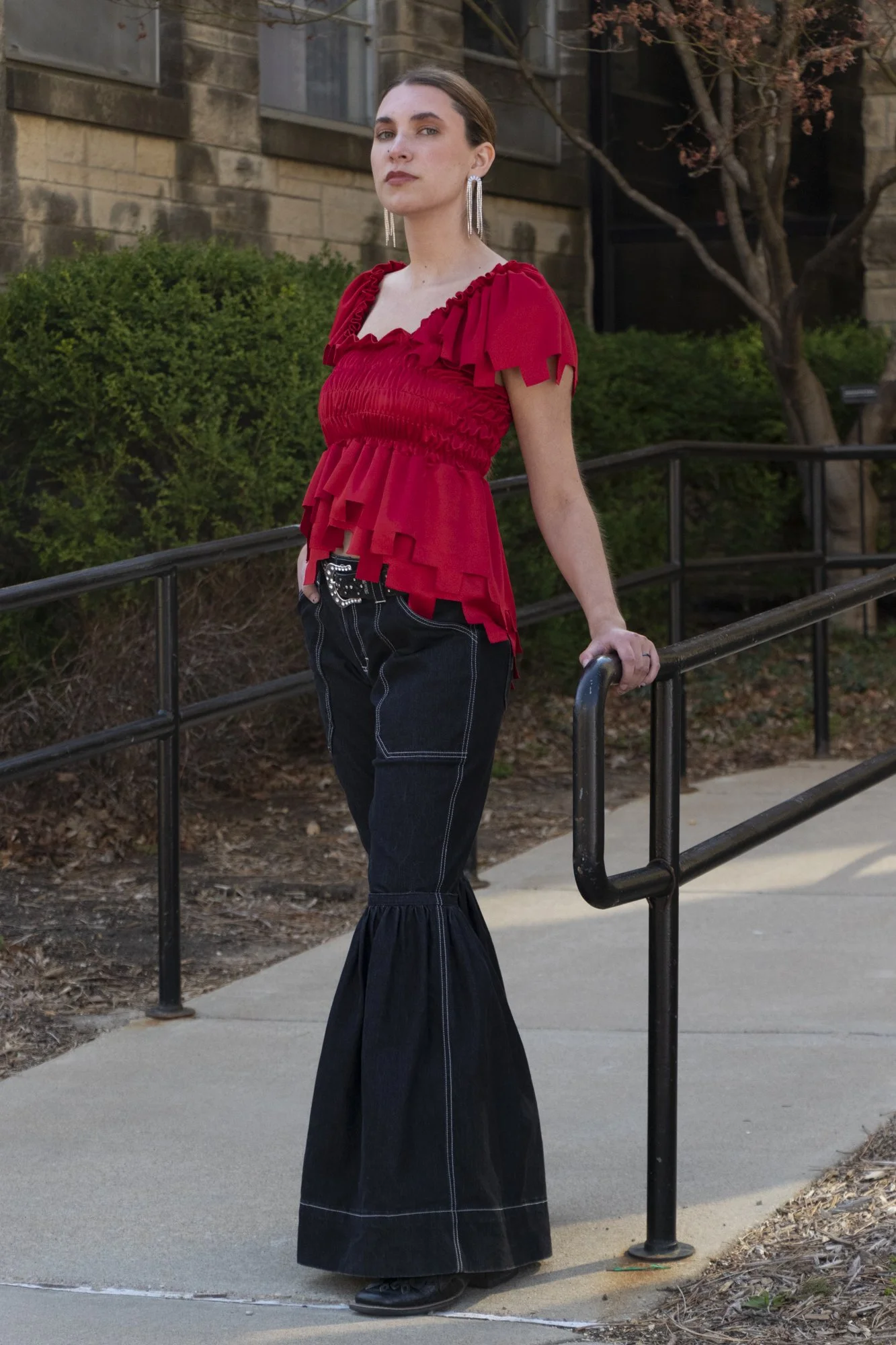gathering fabric & information
“The purpose of this outfit was to explore trend forecasting. For the top, I analyzed fast fashion brands and the tops being made today. The goal was to create a top that would be more sustainable. Research shows that more consumers are interested in sustainable fashion, yet do not want to spend more money. They also do not like re-wearing outfits (Brydges et al., 2020). How this can be combated will be the challenge designers will face. My approach was achieved through the zero-waste technique of tessellation and a modifiable garment. This way the wearer has more options to style the garment which encourages emotional durability through personalization. Other benefits of the garment are adjustable sizing and the ability to manufacture the garment in a normal factory. The jean analysis revealed a wider leg, similar to those seen in the ’70s. I decided to go with bell bottoms as wide boot cuts were the largest width at the time. Instead of inserting panels to achieve volume, I gathered the material below the knee adding a thin band to accentuate the change.
Here at Kansas State University, the Fashion Studies program empowers students and faculty to not only grow in creativity, but also in awareness of social issues. One of the main topics we explore is the sustainability issues in our world today and what we can do about them. This project helped me grow in my thinking about sustainability and how to design for longevity and usability.”
— Elizabeth Esch
Model: Abbey Johnson ︱Photographer: Shreepad Joglekar
Brydges, T., Retamal, M., & Hanlon, M. (2020). Will COVID-19 support the transition to a more sustainable fashion industry? Sustainability: Science, Practice and Policy, 16(1), 298–308. https://doi.org/10.1080/15487733.2020.1829848





